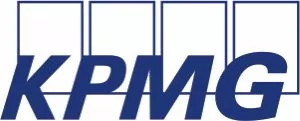- within Technology, Media, Telecoms, IT, Entertainment and Employment and HR topic(s)
- with Finance and Tax Executives
- with readers working within the Accounting & Consultancy, Consumer Industries and Technology industries
Introduction
The taxation of the digital economy has prompted tax administrations throughout the world to become more aggressive in their efforts to eradicate base erosion and profit-shifting activities conducted by multinational enterprises (MNEs). As a result, there has been a significant increase in transfer pricing (TP) disputes between these MNEs and the respective tax authorities in the jurisdictions in which they operate worldwide, during which the pricing methodologies of the MNEs' related party transactions have been contested. MNEs must, therefore, ensure that they achieve consistency with the arm's length principle in the pricing of their related party transactions, as well as compliance with their respective jurisdictional transfer pricing requirements, in order to achieve favourable dispute resolution involving the payment of little to no additional tax liabilities.
The weight of achieving watertight TP compliance can be challenging for these MNEs when combined with the day-to-day running of a business, and as such, the value-add of TP specialists is apparent, saving these organizations millions of dollars in penalties and additional tax liabilities. In a bid to save costs, improve efficiency and enhance the quality of their deliverables, some TP consultants are beginning to employ the use of technology to achieve TP compliance for their clients.
The recent strides in the advancement of Artificial Intelligence (AI) beg the question, "What can't AI do?". Its problem-solving appeal has permeated every industry and the professional services industry is not excluded. With the introduction of software like the Aibidia TXM, TPGenie, KPMG TPAD and many more, TP consultants around the globe are exploiting the feats being made in the advancement of AI to achieve efficiency in the complexity of TP compliance.
This article explores the integration of AI in TP compliance, highlighting both the advantages and potential drawbacks, respectively.
Transfer Pricing Compliance
The United Nations Practical Manual on Transfer Pricing defines TP as the "general term for the pricing of cross-border, intra-firm transactions between related parties...the setting of prices for transactions between associated enterprises involving the transfer of property and services". As the term "multinational" implies, MNEs are entities with transnational operations. In a bid to facilitate their international operations and in some cases, take advantage of economies of scale, foreign affiliates tend to conduct transactions amongst one another. The agreed compensation for such arrangements is referred to as the transfer price. In a majority of the instances, the transacting entities reside in different jurisdictions, therefore, such cross-border transactions will have an effect on the tax bases of their respective jurisdictions. A TP dispute would usually occur when a tax jurisdiction takes a decision to open an investigation into the controlled transactions conducted by an MNE within its jurisdiction. The crux of such a TP dispute resolution would be the determination of the consistency the MNE's transfer prices with the Arm's Length Principle.
Simply put, consistency with the Arm's Length Principle guarantees that the prices of controlled transactions are comparable to those of similar uncontrolled transactions. Although the notion of the "Arm's Length Principle" has been in place since around the 1920s, the "universal" guidelines for TP came into play in 1979, when the Organisation for Economic Co-operation and Development (OECD) first issued the TP Guidelines for MNEs and Tax Administrations, and there have been subsequent releases of the guidelines since then. Consequently, tax administrations worldwide have adopted these guidelines in the creation of their jurisdictional TP regulations. Although TP regulations may vary across jurisdictions, similarities can be observed between jurisdictional TP compliance requirements; the major requirement being the following:
Annual statutory filing of TP returns
A considerable number of countries within America, Europe, the Middle East, Asia and Africa require MNEs to either disclose their annual related party information in their income tax returns and/ or to file TP returns separately. In Nigeria, in accordance with the Income Tax (TP) Regulations 2018 [commonly referred to as The Nigeria TP Regulation (NTPR)], taxpayers are obligated to file their annual TP returns, which consist of the disclosure and declaration forms, no later than six months after the company's accounting year end. Non-compliance is met with punitive action by the tax authorities.
Preparation of contemporaneous TP documentation
In 2015, the OECD and the G20 countries released the Action 13 of the Base Erosion and Profit Shifting (BEPS) framework. This report introduced the concept of the "three-tiered approach" to TP documentation which consists of the TP master file, local file, and country-by-country (CbC) reporting. According to the Guidance on the Implementation of TP Documentation and CbC Reporting released by the OECD in 2015, the master file contains standardized information relevant for all MNE group members, the local file consists of information specific to the material transactions of the local taxpayer and the CbC report contains information regarding the global allocation of the MNE group's income and taxes.
The NTPR requires taxpayers operating within Nigeria to prepare their TP documentation contemporaneously and to have them in place prior to the due date of filing of the income tax returns. These documentations are expected to sufficiently demonstrate the MNEs compliance with the arm's length principle and should be submitted to the tax authorities upon request.
The Integration of AI into routine TP compliance
Upon reading this subtitle, the image that might have popped up in some minds might have been one of robots preparing TP local files! However, a publication by IBM provides a more grounded and wholistic definition of AI as the leveraging of computers and machines to mimic the problem-solving and decision-making capabilities of the human mind. Simply put, AI consists of a bunch of systems that are capable of processing data and generating logical and useful output. The most popular AI inventions at the time of writing this article include Open AI's ChatGPT ( a chatbot able to maintain conversational dialogue), Google Cloud AI platform ( a platform that providers its users with machine learning tools), IBM Watson (a platform that allows its users to automate machine learning processes), DeepMind's AlphaGo (a computer program renown for defeating the Go game world champion) and many more.
As examined above, it can be summarized that the TP compliance process can be a lengthy and burdensome one. To achieve a good TP documentation, which is one that is detailed, highlights accurate analyses and demonstrates consistency with the arm's length principle, the TP consultant will be required to, firstly, collate the necessary data from the taxpayer through the review of relevant support documents or the interviewing of the company's key personnel. This data is then properly analysed to determine the particulars of the controlled transactions under review. Once the analysis of the controlled transaction is complete, the TP consultant goes ahead to conduct extensive research into the industry within which the MNE operates. It is important that the TP consultant conduct the entirety of this process in order to gain a robust understanding of the MNE as well as the Group as a whole. Finally, the controlled transactions are assessed by benchmarking the transfer price against the prices charged for similar transactions between independent parties.
In recent times, TP professionals have determined to work smarter. With the deployment of AI in the TP compliance process, many consultants are able to process data faster, achieve accuracy in their TP computations and analyses (devoid of human error), improve efficiency in their operations and achieve commendable turn-around on their deliverables. Some benefits of AI include:
Improved data analysis
MNEs conduct numerous transactions per period with both affiliates and third parties. These transactions generate vast amounts of data that require intensive man-hours to process. However, AI tools are able to rapidly process data, identify useful trends and provide relevant information to the TP consultants. AI tools can also be extremely advantageous in TP benchmarking analyses. Be it the use of the Transactional Net Margin Method or the Comparable Uncontrolled Price Method, AI is able to cut in half the time spent on manually identifying suitable comparables by leveraging on its machine learning algorithms.
In recent times, AI tools are also being employed in the valuation of intangible assets through the extensive analysis of company data relating to the creation and exploitation of the intangibles.
Enhanced risk assessment
By reason of its ability to identify data trends and spot outliers, AI has become an immeasurable value-add to the TP risk assessment process saving taxpayers from the headaches caused by incorrect/ incomplete disclosure.
AI tools are also being employed by TP professionals and multinationals to ensure that TP compliance deadlines are met through the use of virtual assistants that provide periodic reminders to key personnel.
Advanced decision making
From the results generated from its analysis, AI is capable of identifying changes in industry trends and also predicting same. This aids TP consultants in preparing robust TP policy documents that will guide their clients future related party transactions to ensure consistency with the arm's length principle and consequently, enable the taxpayers to enjoy full compliance with the TP regulations in their respective jurisdictions.
AI software such as Aibidia TXM, TP Genie and KPMG's TPAD are at the forefront of the integration of AI in TP compliance. Aibidia TXM is an AI software that offers a variety of digital TP solutions. The software can be used to prepare TP documentation, CbC reporting, value chain analysis, operational transfer pricing etc. TP Genie is an AI software that incorporates the use of ChatGPT in providing responses to TP queries and preparing TP documentation. The KPMG TPAD provides an automated solution to the TP documentation process through the combination of word and excel documents. This has resulted in the optimization of the process of the local file preparation and has also resulted in the improved efficiency of its users.
As it is popularly said, TP is not an exact science and for this reason it might leave room to subjectivity in certain areas. Hence, this creates one major drawback for AI which is that human expertise which results from first-hand experience cannot be substituted by machine learning. A consultant with multiple years of experience with the tax authorities is definitely a higher value-add when compared to data-processing system. In a publication by A G Danish, the author provides twelve reasons why AI cannot replace humans, one of the main reasons being AI's lack of creative ability. While humans are able to conceive imaginations and think outside the box, AI is restricted to leveraging on already existing data to form patterns and identify trends.
Another major disadvantage that the integration of AI in the TP compliance process brings is the lack of data privacy and security. Considering AI's immense data processing capacity, it is not unfounded to expect that TP consultants are able to service various taxpayers simultaneously. Therefore, the risk of unauthorized access and potential data misuse is highly increased. For this reason, many professional service firms, like KPMG, have put policies in place to ensure that employees are properly trained on data privacy requirements and that checks are in place to ensure the proper handling of client information.
Conclusion
The advent of AI has brought a unique opportunity to the fore, with regards to TP compliance, which needs to be exploited by both the taxpayers and the professional services providers. Although gaining popularity in the developed economies, the use of AI for TP compliance purposed is almost non-existent in developing economies, like Nigeria, for various reasons paramount of which is the high cost of implementation. The benefits that AI brings to the TP compliance process are significant, therefore TP professionals need to become major stakeholders its continual advancement.
As stated above, it is imperative to note that AI is not and will never be a "human-substitute" as its functions are complementary in nature.
References
- OECD TP Guidelines, 2022.
- UN Practical Manual on TP
- https://www.linkedin.com/advice/3/how-do-you-leverage-ai-automation-features-tp
- https://intrapricing.com/blog/chatgpt-in-transfer-pricing-software-tpgenie/
- https://kpmg.com/dk/en/home/insights/2020/05/tpad-automation-of-the-transfer-pricing-documentation-process.html
- https://aibidia.com/digitalizing-operational-transfer-pricing-why-doing-it-first-can-be-the-best-choice/
- United Nations Conference on Trade and Development Series on Issues in International Investment Agreements
- https://www.ibm.com/topics/artificial-intelligence
- https://www.pycodemates.com/2023/02/top-5-worlds-most-advanced-ai-systems.html
- https://www.linkedin.com/pulse/12-reasons-why-ai-cannot-replace-humans-a-g-danish#:~:text=While%20AI%20can%20assist%20humans,capabilities%20rather%20than%20replacing%20them.
- OECD/G20 BEPS Project Action 13: Guidance on the implementation of TP Documentation and CbC reporting
The opinion expressed in this article is solely personal and does not represent the views of any organization or association to which the authors belong.



